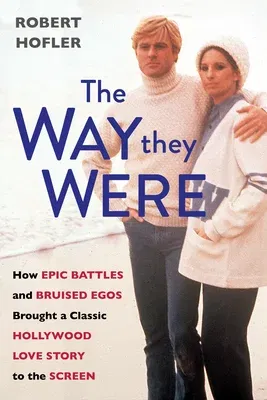Coinciding with the 50th anniversary of "The Way We Were," this
intriguing and impeccably researched book is the first ever account of
the making of the classic film starring Barbara Streisand and Robert
Redford, revealing the full story behind its genesis and continued
controversies, its many deleted scenes, its much-anticipated but
never-filmed sequel, and the real-life romance that inspired this
groundbreaking love story...
It's one of the greatest movie romances of all time. Fifty years on, the
chemistry between Barbra Streisand as Jewish working-class firebrand
Katie Worosky and Robert Redford as all-American golden boy Hubbell
Gardiner remains potent. Yet the friction and controversy surrounding
The Way We Were was so enormous, the movie was nearly never made at
all.
Screenwriter Arthur Laurents wrote the role of Katie with Streisand in
mind. Casting Hubble was another matter. Redford, already a superstar,
was reluctant to play what he perceived as the "Ken doll" to Streisand's
lead, and demanded his role be changed and expanded. Laurents resisted,
telling director Sydney Pollack, "You'll ruin the movie if it ends up
being about two people. It's Katie's story, not Hubbell's." Despite his
protests, ten writers--among them Francis Ford Coppola--were brought on
to rework the script.
Laurents's fears were well founded, and the first preview was
disastrous. Producer Ray Stark and Pollack, with Redford's approval, cut
several scenes, upsetting Streisand and Laurents. Yet the edits worked.
Such was the movie's success that Redford was open to making a sequel,
though Laurents's script was never greenlit. Some of those "lost" scenes
are now being restored to the film for its 50th anniversary.
It's also the deep, surprising love story at the heart of The Way They
Were that makes it so memorable, and Robert Hofler explores its
inspiration--the relationship between Laurents, a Jewish Brooklyn-born
college leftist, and his longtime partner, Tom Hatcher. Drawing on a
vast trove of Laurents's and Pollack's unpublished writings, as well as
interviews with Streisand, Redford, and other key players, this is the
definitive account of a film that changed the rules of moviemaking and
defined romance ever since.

